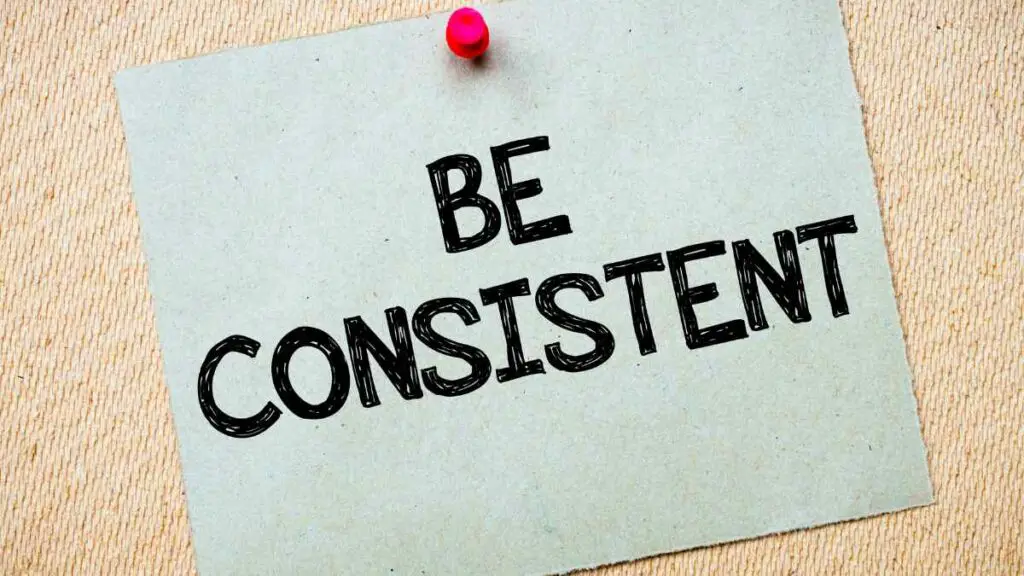Are you the parent of a headstrong and stubborn toddler who won’t take no for an answer?
Then you know how difficult it can be to get your little one to cooperate.
But take heart!
With the right strategies, you can learn to manage the behavior of a stubborn toddler.
Read on to find out how.

What is a Stubborn Toddler?

Let’s face it; all toddlers can be stubborn at times! From refusing to eat their vegetables to not wanting to go to bed on time, it’s sometimes hard to deal with their strong-willed behavior.
But what exactly is a stubborn toddler?
Well, a stubborn toddler is simply a toddler who is unwilling to change their behavior or accept advice. They tend to throw tantrums, refuse to listen, and can sometimes be difficult to reason. I’ve given you the definition of a toddler here, but stubborn ones take things to a new level.
-

Bold Male Pride – Baseball Trucker Cap Celebrating Masculinity
$24.00 Select options This product has multiple variants. The options may be chosen on the product page -

Dad Bod Appreciation Gift Mug
$19.00 Add to cart -

Dad Bod, Bad Jokes Structured Baseball Cap
$29.00 Select options This product has multiple variants. The options may be chosen on the product page
Having a stubborn toddler isn’t all bad. Your toddler can learn to listen and cooperate with patience, love, and consistency. Even though it may be challenging at first, the rewards of raising a strong-willed toddler can be huge.
So don’t get discouraged when your toddler puts up a fight. Just remember that it’s all part of raising a little person! With a little understanding and love, your toddler will eventually learn to become more cooperative.
The Challenges of Parenting a Stubborn Toddler

When parenting a toddler, challenge is definitely the operative word. Toddlers can be quite independent and strong-willed, often doing things their way despite any objections from their parents.
This can be quite frustrating for parents; it’s important to remember that this is just a phase and that things will eventually improve.
In the meantime, here’s an overview of the challenges of parenting a stubborn toddler.
- Battle of wills. It’s hard to stay calm and consistent while dealing with a toddler who refuses to listen. They may say no to everything or insist on doing things their way. No matter how hard you try, it can be difficult to get them to comply.
- Tantrums. Toddlers are prone to tantrums when they don’t get their way, which can be very draining for parents. It’s essential to remain calm during these episodes and try to help your child work through their emotions in a healthy way.
- Feeling of being overwhelmed. Parenting is hard; dealing with a strong-willed child can make it even more so. It’s important to take time and reach out to friends and family for support.
Though parenting a stubborn toddler can be challenging, it can also be very rewarding. You can help your toddler grow and develop into a thoughtful and considerate person with patience and understanding.
Understanding the Causes of Toddler Stubbornness
Developmental Stages and the Impact on Behaviour

So why do toddlers act so stubbornly? It may be due to the development stages they’re going through.
During the toddler years, children develop their sense of autonomy and control. This generally includes testing boundaries and asserting their opinions, which can look like stubborn behavior. It’s the child’s way of showing that they’re beginning to understand their identity and power.
It’s also during this time that toddlers are learning about their emotions. They’re learning to express when they feel overwhelmed or frustrated and regulate their emotions. This can also result in stubborn behavior, as toddlers may not have the emotional vocabulary to express themselves more constructively.
Parents must remember that stubborn behavior is often a sign of development and should be supported, not punished. Parents can reduce stubborn behavior by setting clear, consistent boundaries and providing positive reinforcement for desired behavior.
By understanding and embracing the development stages of a toddler, parents can better recognize why their child may be acting stubbornly and support them through it. After all, childhood is a time of exploration and learning – including learning how to be stubborn!
The Power of Choice and Autonomy

Once upon a time, there lived a stubborn toddler who refused to take instructions from anyone. No matter how hard her parents tried, nothing seemed to work. Every day, there was a battle of wills between the toddler and her parents.
One day, the parents had an idea. Instead of forcing the toddler’s compliance, they decided to give her choices and allow her to make her own decisions. They gave her two options: “would you like to wear a blue shirt or a red shirt?”.
Surprisingly, the toddler responded positively to this new tactic. She could now make her own choices, which gave her a sense of autonomy. She could now express her opinions without feeling like they were being imposed upon her.
Her parents also taught her valuable lessons in decision-making and problem-solving by giving her the power of choice. She was learning how to weigh the pros and cons of different options and how to make an informed decision.
The toddler was now a much happier and more compliant little girl. She had learned to appreciate the power of choice and autonomy, and her parents had learned a valuable lesson about parenting.
The moral of the story is that giving children a chance to make their own choices is an important part of helping them become confident and capable adults.
Strategies to Help Manage Stubborn Toddlers
Establish Boundaries and Rules

Having a toddler can be a test of patience, but establishing boundaries and rules can help to avoid the dreaded temper tantrum.
One way to establish boundaries is to reward good behavior.
Positive parenting 101!
If your toddler follows the rules, reward them with a sticker or a hug. This can be a powerful incentive to help them learn that certain boundaries should not be crossed.
Another effective way to establish boundaries is to set clear rules and expectations. Make sure that they understand that there are consequences for breaking the rules. Explain why the rules exist and why they should be followed.
Finally, it’s important to be consistent. If you make a rule, stick to it. If you establish a boundary, reinforce it. This can be challenging, but it is essential if you want to teach your toddler about respect and responsibility.
Offer Alternatives

When dealing with a stubborn toddler, one can often feel like they are playing a game of whack-a-mole and are just trying to keep ahead of the little tyke.
That’s exactly what parenting is like!
It can seem like you’ve tried everything, only for them to ignore every suggestion you make or flat-out refuse it.
As I mentioned above, rather than engaging in a battle of wills with your toddler, why not show them some alternatives to the situation? Offer up various options that they can choose from, so they can still get the desired outcome they’re looking for. This way, they’ll still feel like they have some control over the situation without feeling like they are being forced into something.
For example, why choose between two pairs if your toddler refuses to put their shoes on? Or if they are refusing to eat their vegetables, offer them a variety of dips they can try to make it more fun. If they refuse to take a bath, try offering a bubble bath or giving them some fun bath toys to play with.
Ultimately, the goal is to give your toddler autonomy and let them feel in control. This way, when you offer them alternative solutions to the problem, you can work together to find a solution that works for everyone.
Give Positive Reinforcement

Positive reinforcement involves rewarding a desired behavior with something your toddler finds rewarding. This could be verbal praise, a hug, or a special treat.
For example, if your toddler is resisting brushing their teeth, you could encourage them by saying something like, “You’re doing a great job brushing your teeth!” or “I’m so proud of you for brushing your teeth.” My secondborn loves brushing his teeth! My firstborn, not so much. Believe it or not, my secondborn is significantly more stubborn.
You could also reward them with a hug or a special treat when they finish brushing.
The goal is to make your toddler feel good about doing the desired behavior. It’s important to be consistent with your rewards, so they know what to expect each time.
Positive reinforcement is a powerful tool for getting toddlers to do things they don’t want to do. It can effectively encourage them to brush their teeth, take a bath, or pick up their toys.
So next time you’re struggling to get your toddler to do something, remember to use positive reinforcement.
It could make the process a lot easier!
Remain Calm

Is it getting to the point where you start to lose your cool? Here are some tips to help you remain calm when dealing with your little one’s defiance.
First, take a deep breath to help clear your mind and remind yourself that you are in control. Try to stay focused on the task at hand, and don’t let yourself get distracted.
Second, remember that your toddler is trying to learn about the world. They may not understand the consequences of their actions, so try to explain things in a way they can understand.
Third, be firm but kind. A calm and gentle approach goes a long way in helping to resolve the situation. Don’t be afraid to set boundaries, but also don’t be too strict.
Fourth, practice positive reinforcement. When your toddler does something right, let them know. This will encourage them to do the right thing more often and help them understand the consequences of their actions.
Finally, take a break. If you’re feeling overwhelmed, step away for a few minutes. Sometimes just a few minutes of peace and quiet can restore your patience and composure.
Working Together With Your Stubborn Toddler
Model the Behaviour You Want to See

You can successfully encourage your toddler to do the right thing by modeling the behavior you want to see.
One way to model the behavior you want to see is to take the lead and show your toddler how it’s done. If you want them to pick up their toys, demonstrate how it’s done by picking them up. If you want them to share, show them how to share something with another child.
Your toddler will learn by example, so be sure to model the behavior you want to see in a positive and encouraging way.
Another way to model the behavior you want to see is to reward good behavior. Praise your toddler when they do something right, and give them something small like a sticker or a hug to show them that you appreciate them. This will help to reinforce positive behavior and encourage them to keep doing the right thing.
Finally, be patient and consistent. Your toddler may need time to adjust to the new behavior, so stick with it. And don’t forget to be understanding and kind. At the end of the day, your toddler is still a child, and they need love and guidance just like everyone else.
By modeling the behavior you want to see, you can successfully encourage your toddler to do the right thing. So be sure to take the lead, reward good behavior, and be patient and consistent.
With a little effort, your toddler will soon follow your good example.
Be Consistent and Encourage Cooperation

The key to encouraging cooperation is to be consistent and to set expectations. Be consistent with how you respond to your toddler’s good or bad behavior.
When they do something you want them to do, give them a consistently positive response.
It’s also important to encourage cooperation rather than just punishing bad behavior. Give your toddler praise when they do something you like, and give them opportunities to make good choices.
For example, if you want your toddler to stop throwing their food, provide them with alternatives, like offering them a different food item or giving them a toy instead.
It’s also a good idea to take a step back and try to understand why your toddler is acting out. Are they feeling anxious, frustrated, or bored? Understanding the root cause of their behavior can help you better address their needs.
Finally, stay calm and be patient. As frustrating as it might be, your toddler needs time to learn to cooperate and follow the rules.
So, don’t give up!
You can help your stubborn child learn to cooperate with consistency and patience, and you’ll be glad you did!
Show Empathy

As a parent, it is not uncommon to come across a stubborn toddler who is determined to have their way, no matter what. Showing empathy in these situations can help to diffuse a difficult situation and prevent a tantrum.
The best way to show empathy to stubborn toddlers is to acknowledge their feelings. Rather than disregarding their emotions, try to understand why they feel the way they do. Even if you don’t agree with their reasoning, simply saying something like “I understand that you want this, and it makes you upset that you can’t have it,” can show them that you understand their emotions and that you recognize the need to be heard.
Another way to show empathy is to try to put yourself in your child’s shoes. If you can relate to their frustration, you may be able to empathize more effectively. For example, you can tell them, “I know exactly how you feel. When I was your age, I wanted something so badly, and I couldn’t have it either.”
Finally, you can show empathy by offering appropriate alternatives. For example, if your child wants a toy they can’t have, try developing an alternative toy or activity they will enjoy. This will demonstrate to your child that you understand their point of view and want to help them find a solution.
Showing empathy to a stubborn child can be challenging, but it is an important skill for all parents to develop. Acknowledging your child’s feelings, putting yourself in their shoes, and offering alternatives are great ways to show empathy and keep your child’s tantrums at bay.
Create Opportunities for Self-Expression

You can create opportunities for your toddler to express themselves positively by giving them a safe space to explore without fear of negative reactions.
Let them know you’re listening and available to discuss their feelings. I’ve said it a few times, give them a chance to make their own decisions, even if it’s about something small like what color socks to wear.
Encourage positive behaviors by providing positive reinforcement. Praise them when they make good choices and show self-control. Let them know that you’re proud of them and that you appreciate the effort they’re making.
Sometimes, it’s important to give toddlers the space to express their emotions healthily. If they’re upset, allow them to express their feelings without judgment. Let them know that it’s ok to be frustrated and that you’ll be there to help them process their emotions.
Finally, provide plenty of opportunities for creative self-expression. Let them draw, dance, sing, or play pretend. These activities can help toddlers express themselves without resorting to negative behavior.
Conclusion
The stubborn toddler has given parents a run for their money, but in the end, it can be said that a bit of patience and persistence will go a long way in helping parents deal with this troublesome stage of parenting.
Understanding that this is a natural part of the toddler’s development can give parents the guidance and understanding to work through this frustrating behavior.
Now, if you can get your toddler to pick up all their toys and put them away, you’ve already won half the battle.
Good luck!


